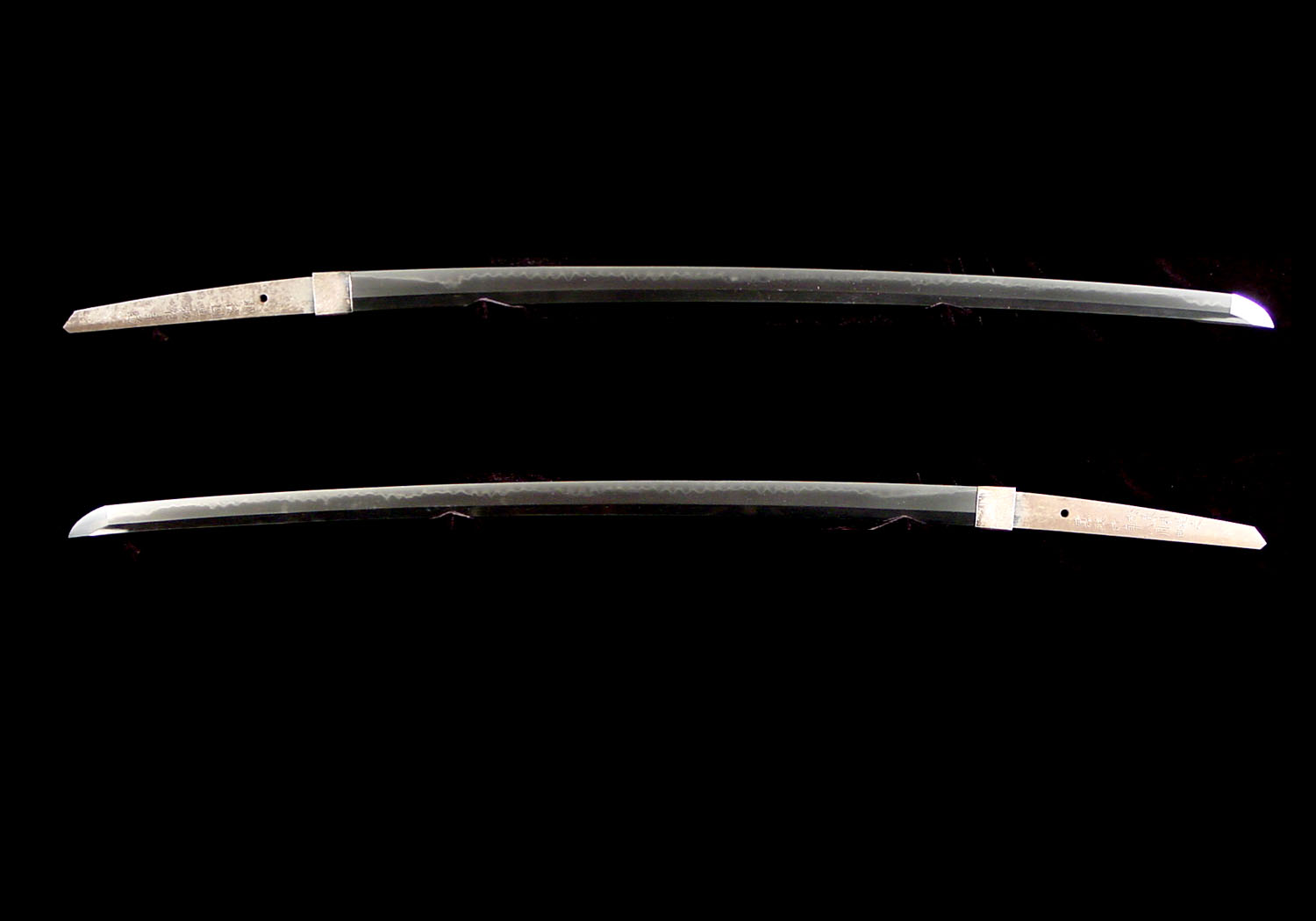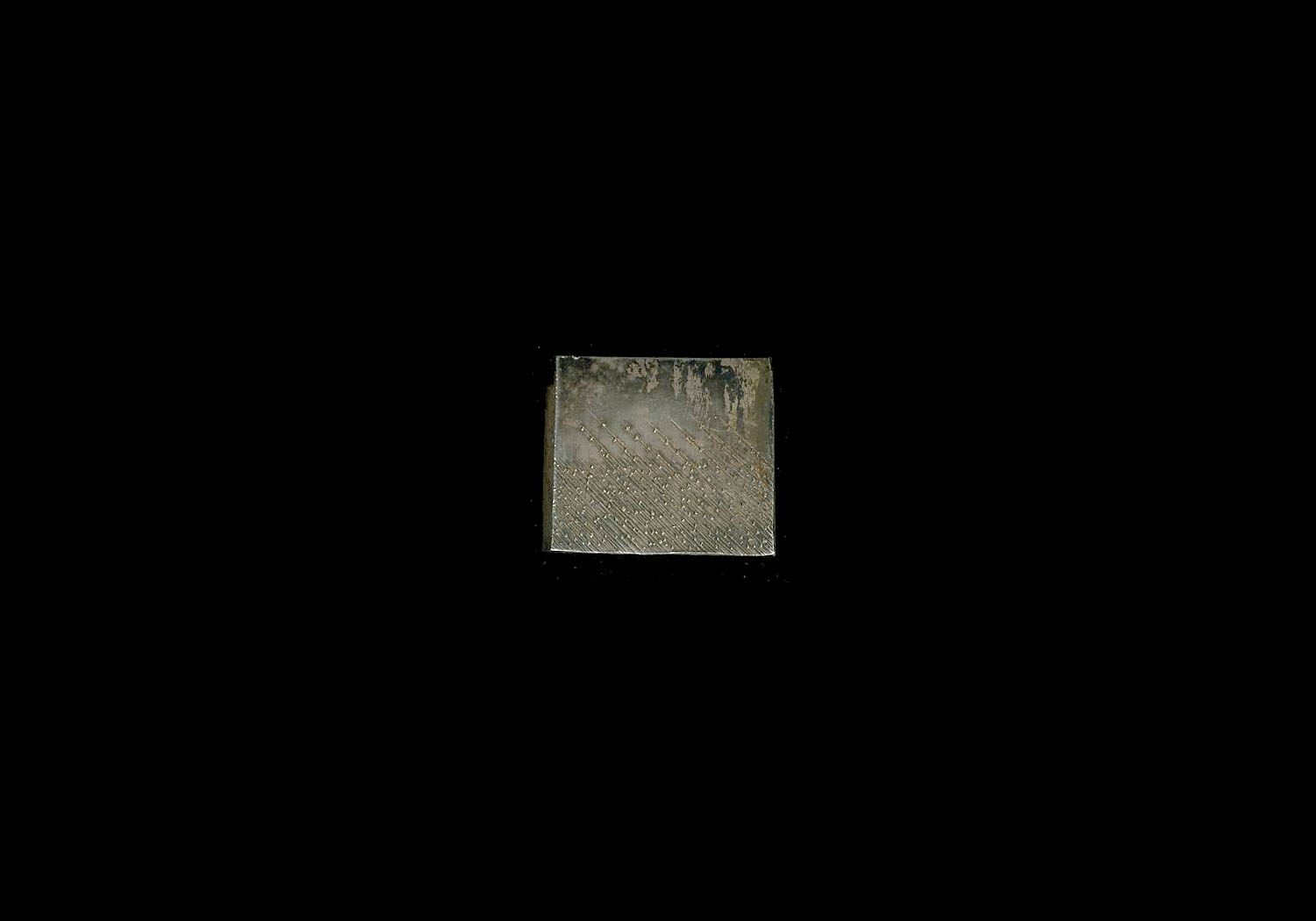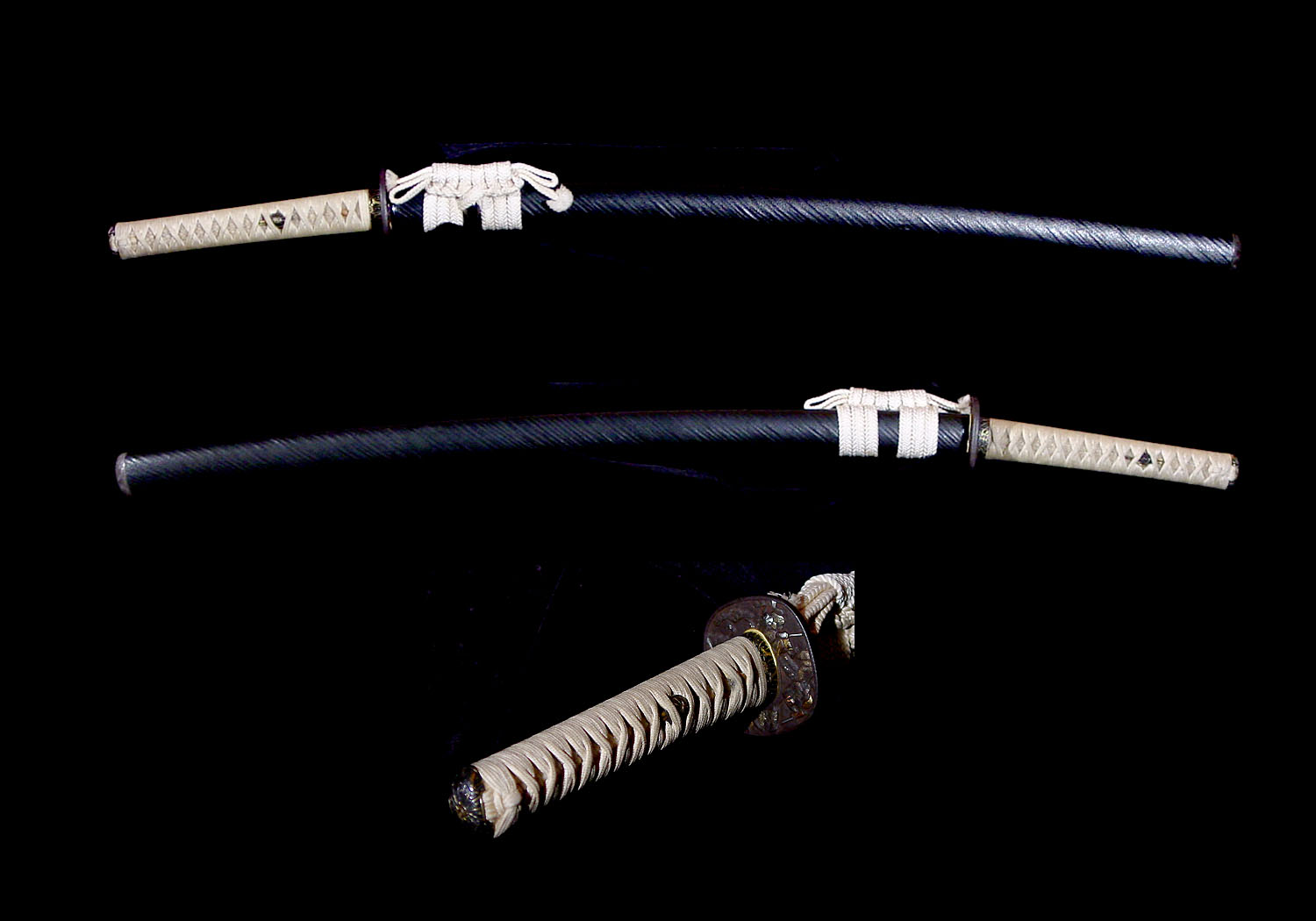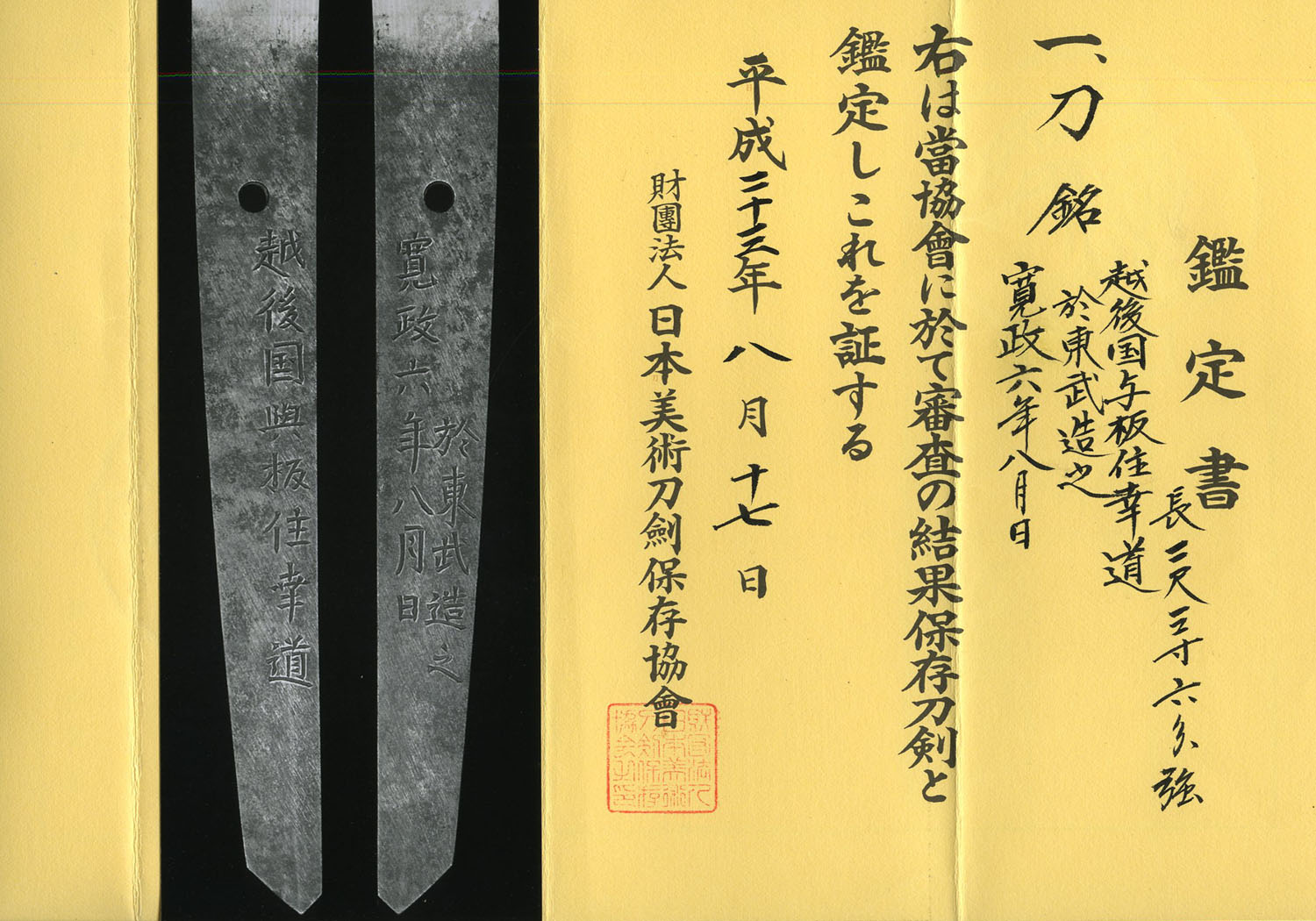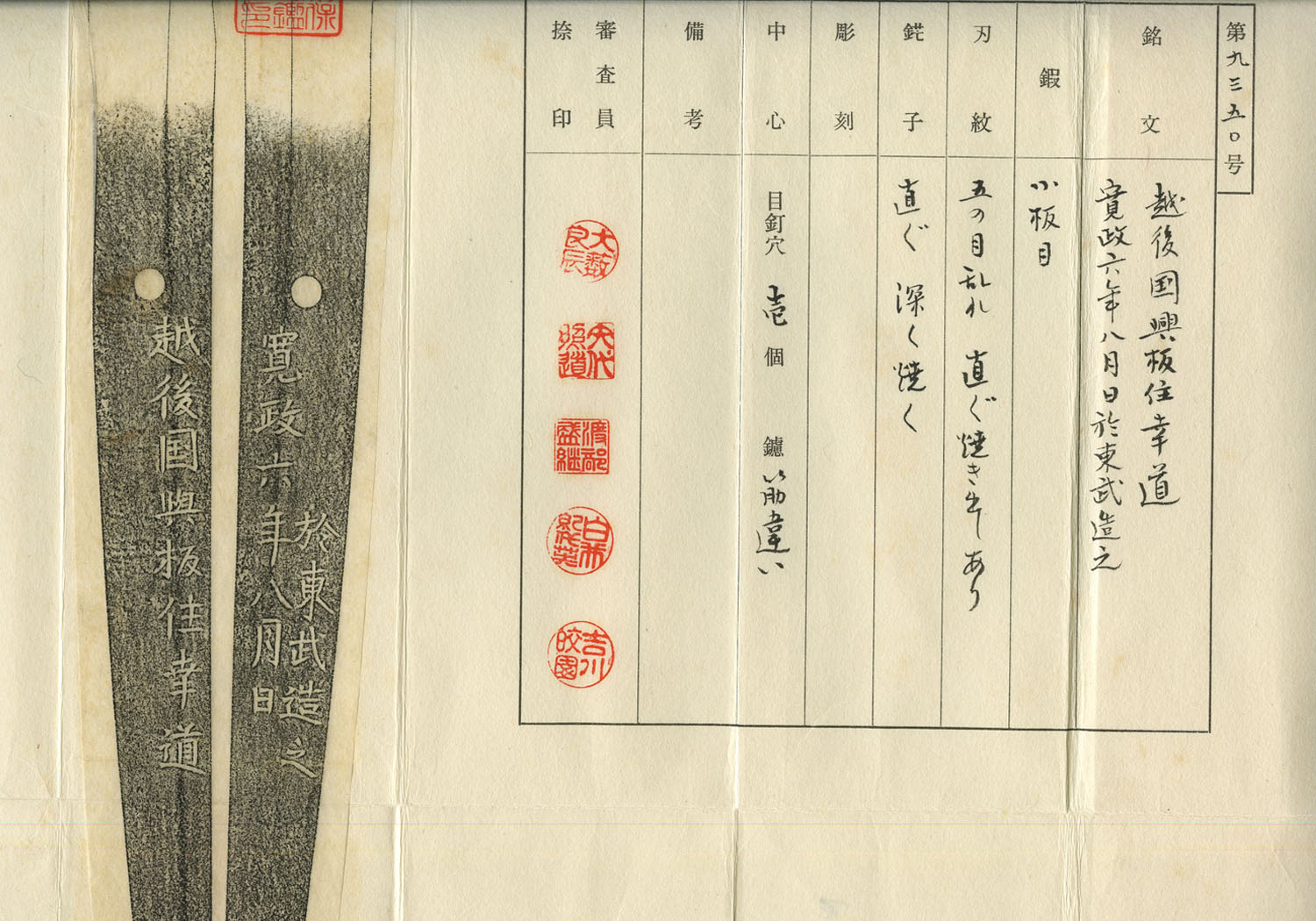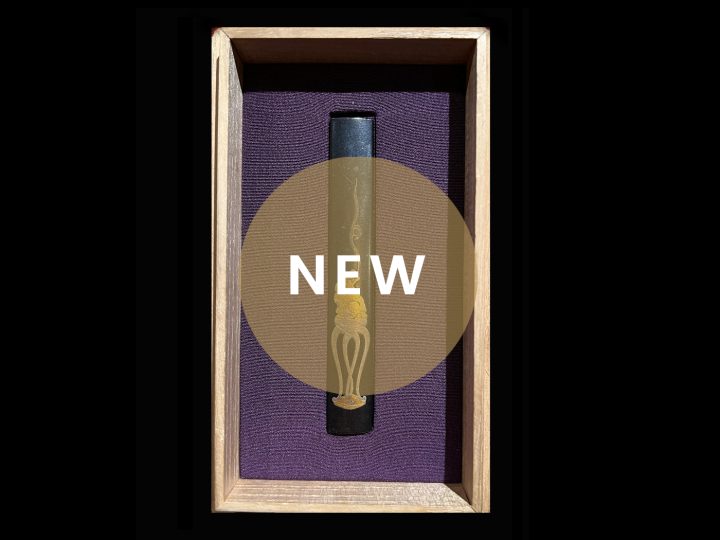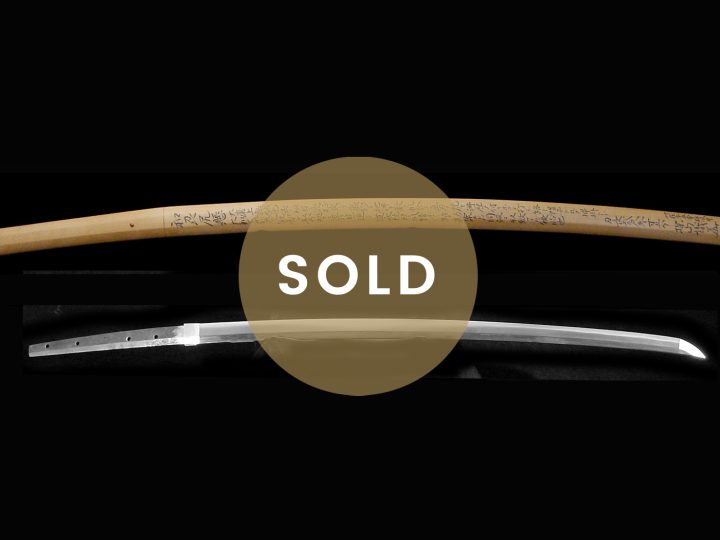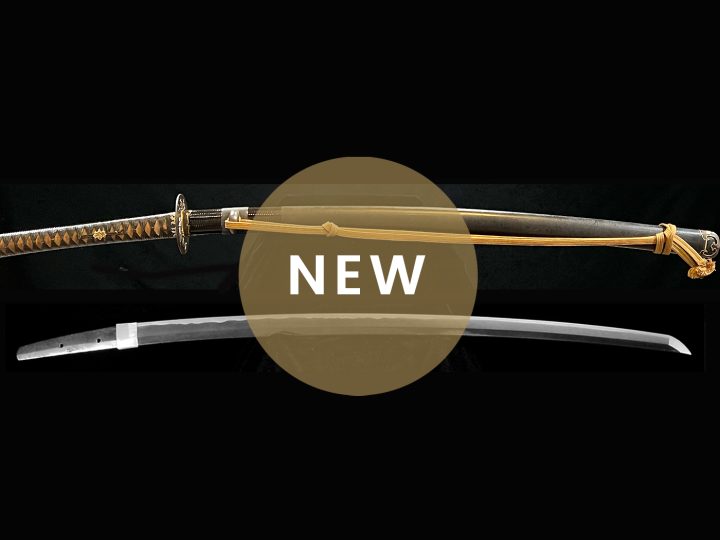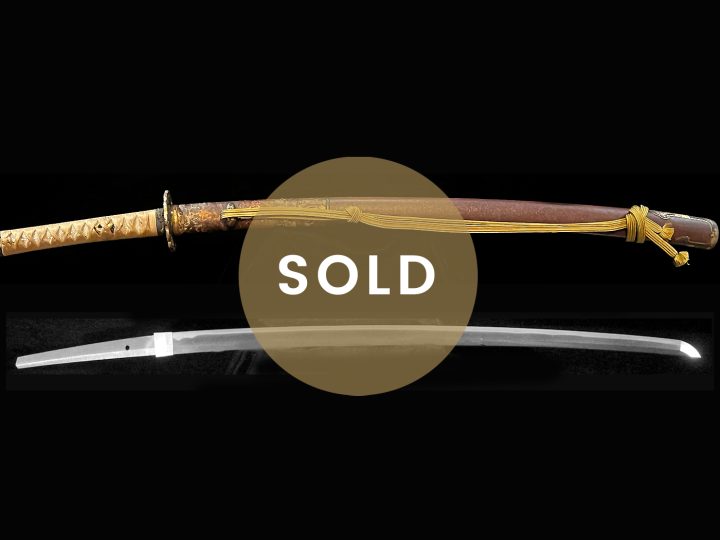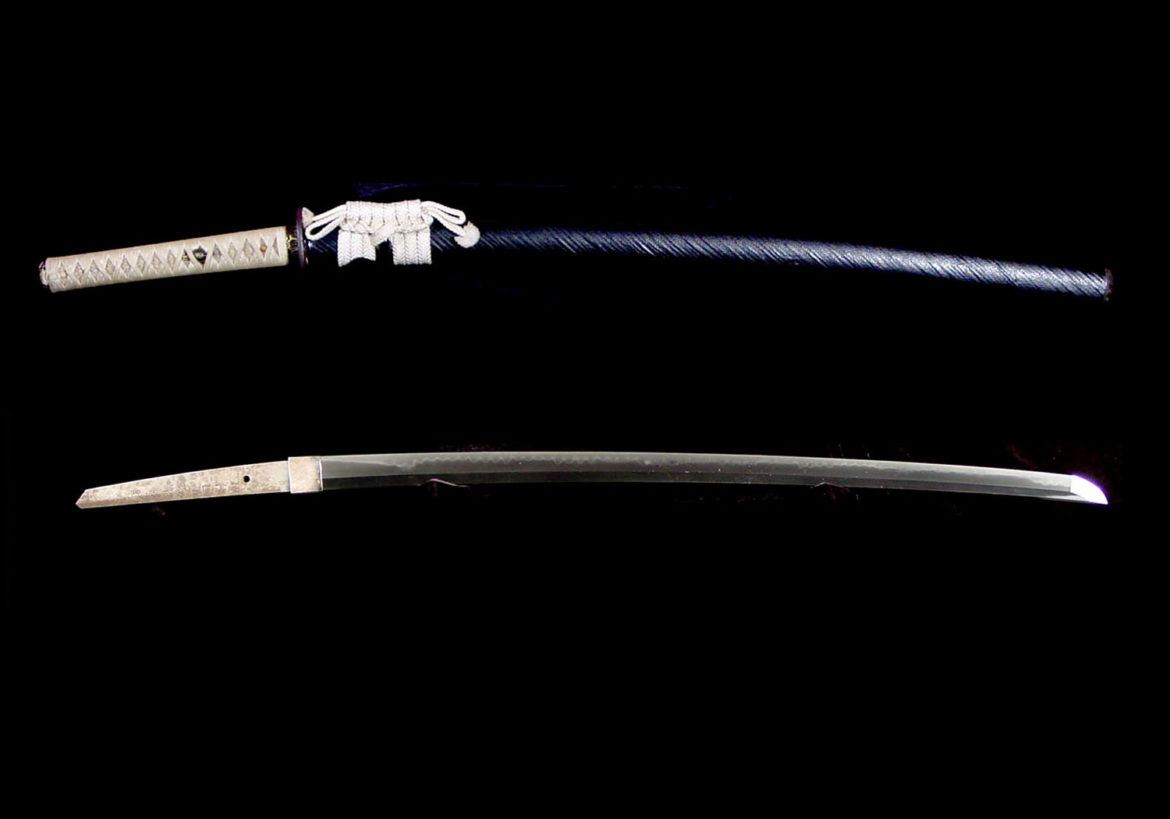
This is a very nice katana by the smith Yukimichi. Yukimichi was a smith who worked in Echigo Province around the beginning of the nineteenth century. The full signature on the omote of this sword reads Echigo (no) Kuni Yoita Ju Yukimichi. The ura reads Kansei Roku Nen Hachi Gatsu Hi (made on a day in August of the sixth year of Kansei (1794)). It also says, Oite Tôbu Kore (o) Tsukuru. This means made in Tôbu (a city in Echigo). This sword was exhibited in the Bizen Osafune Sword Museum in 2016 and a copy of the catalog from that exhibit will be sent with the sword to its new owner.
The following is a translation of the write-up that was done for this blade by the Osafune Sword Museum:
Omote: Echigo no Kuni Okisaka jû Yukimichi
Ura: Kansei roku-nen hachi gatsu-hi
Length: 2 Shaku, 3 Sun, 6 Bu (71.7 cent.)
Sori: 4 Bu (1.2 cent.)
Weight: 490 grams
Period: Late Edo period (222 years ago)
The construction is shinogi-zukuri with an iori-mune. The jigane is ko-itame hada that is very tight and covered in ji-nie. The hamon is gunome-midare. There is a great deal of ashi activity with an entwining of nie at the tops of the midare. The nioiguchi has a tight feeling and is bright. The bôshi is slightly pointed at the tip and has a ko-maru with a kaeri. The curvature is somewhat deep. A yakidashi can been seen on both sides of the blades.
Explanation: If we refer to the Echigo Sado Tôkô Meikan, it states, “a student of sixth generation Tanba no Kami Yoshimichi, and later a student of Suishinshi Masahide. Was known as Tsuboi Kôsaburô. Resided in Yosaka, Echigo. Was active circa Bunka (1804-1818).” It is unclear when he went to Edo; however, looking at the date of this work, he is already display the refined Suishinshi style of workmanship. Thus, we can infer that around this period he was already in Edo producing swords. In the register of Suishinshi students, “the retained smith of II Ukyô Daiyû,” and thus, he was the smith to the Yosaka fief, and in a letter sent to Masahide’s student, Naotane, there is also a mention of Kôsaburô’s name, we can understand that Masahide was fond of him.
Yukimichi was was born in Echigo and was a student of the sixth generation Tanba no Kami Yoshimichi and he was also a student in the Suishinshi Masahide Kei. His works show the teachings of these famous lineages. This sword is a strong, wide and robust blade with a cutting edge of 28 3/16 inches or 71.8 cm. The moto-haba is 1.31 inches or 3.3 cm and the saki-haba is 0.9 inches or 2.4 cm. The kasane is 0.26 inches or 0.7 cm. There is a shallow tori sori measuring 0.47 inches or 1.2 cm.
The hada is ko-itame that is quite fine and beautiful. The hamon is a robust gunome-midare with deep ashi. There are clouds of nie floating in the habuchi adding luster and beauty to the sword. It is in excellent polish. The bôshi is almost ichimai on both sides (full temper). The shape is ikubi kissaki reminding us of the great kamakura blades of the 12th and 13th centuries. As you can tell from the photos the nanako is ubu with only one mekugi-ana.
This blade also comes with a very nice koshirae with a martial theme. The fuchi, kashira, and menuki are all armor parts. The fuchi and kashira are parts of a kabuto (helmet). One of the menuki is a helmet resting on an arrow and the other is a menpo resting on an arrow. The tsuba is iron with Samurai in full battle on both sides. It looks like a later Soten style tsuba.
This sword comes with two sets of papers. It has Hozon papers from the NBTHK and also has old NTHK papers done by Yoshikawa Kôen. I just purchased this sword in Japan where dealers and collectors freely admit that they will only seek Hozon papers to save paying the higher fees for Tokubetsu Hozon papers.
PRICE: SOLD



